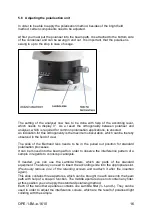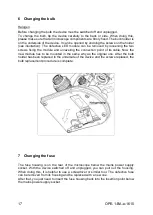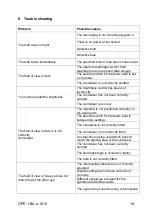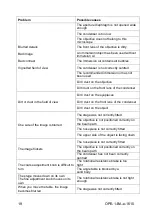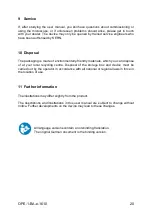
19
OPE-1-BA-e-1610
Problem
Possible causes
Blurred details
Bad image
Bad contrast
Vignetted field of view
The aperture diaphragm is not opened wide
enough
The condenser is too low
The objective does not belong to this
microscope
The front lens of the objective is dirty
An immersion object has been used without
immersion oil
The immersion oil contains air bubbles
The condenser is not correctly centred
The recommended immersion oil has not
been used
Dirt / dust on the objective
Dirt /dust on the front lens of the condenser
Dirt or dust in the field of view
Dirt / dust on the eyepieces
Dirt / dust on the front lens of the condenser
Dirt / dust on the object
One side of the image is blurred
The stage was not correctly fitted
The objective is not positioned correctly on
the beam path
The nosepiece is not correctly fitted
The upper side of the object is facing down
The image flickers
The nosepiece is not correctly fitted
The objective is not positioned correctly on
the beam path
The condenser has not been correctly
centred
The coarse adjustment knob is difficult to
turn
The rotational resistance brake is too
tight
The angle table is blocked by a
solid body
The stage moves down on its own
The fine adjustment knob moves on its
own
The rotational resistance brake is not tight
enough
When you move the table, the image
becomes blurred
The stage was not correctly fitted












